SIDH's journey
 In 1989, SIDH began as a response to the community needs of Jaunpur block in Tehri Garhwal in Central Himalayas. People wanted schools and we began schools in remote villages. After sometime, parents began to complain about the problems created by the current system of education – namely alienation from their land, village, family, culture and rural lifestyle including farming, a livelihood which was their only form of sustenance.
In 1989, SIDH began as a response to the community needs of Jaunpur block in Tehri Garhwal in Central Himalayas. People wanted schools and we began schools in remote villages. After sometime, parents began to complain about the problems created by the current system of education – namely alienation from their land, village, family, culture and rural lifestyle including farming, a livelihood which was their only form of sustenance.
 This was a serious matter because it destroyed a lifestyle essential for their very survival. Parents also complained about the arrogance of their school going children towards their non-literate siblings/elders; about a reluctance to work with their hands because they felt that everything rural was backward.
This was a serious matter because it destroyed a lifestyle essential for their very survival. Parents also complained about the arrogance of their school going children towards their non-literate siblings/elders; about a reluctance to work with their hands because they felt that everything rural was backward.
It was clear that the current system of education was responsible for creating a false sense of superiority. Parents also spoke of how the literate child lacked integrity of character, as a non-literate mother told us, “बच्चों को होना सिखाओ, दिखना नहीं !” (“teach them how to be, and not how to appear to be”).
This was a turning point in SIDH’s journey.
Thereafter, we began to investigate the aims of education and began to see the links between education, lifestyle and happiness. At this point we abandoned mainstream educational practices and began to experiment with more alternative models of learning. We were encouraged to find that the community critique of the modern education system matched the concerns voiced many years ago by Mahatma Gandhi. This further strengthened our faith in the innate wisdom of the local community.
However, things have changed today. The aspirations of the same community have completely altered. The parents of today belong to a younger generation. Influenced by the market and the media, these young parents are the new community representatives; filled with contemporary desires and in a tremendous hurry to realize their aspirations of fully adapting to the modern way of life.
But SIDH has not changed. Perhaps its convictions have been further reinforced. We are certain that going forward we need to make a serious attempt to probe, understand and engage in a dialogue with the younger members of the community around us, with the hope that they will at least listen to what their parents had taught us and maybe even accept or respect it one day. In this way, we will only be returning the wisdom learnt from the community.
So we find ourselves once again at another turning point – or perhaps not. We may have only come full circle.
Milestones of the SIDH Journey
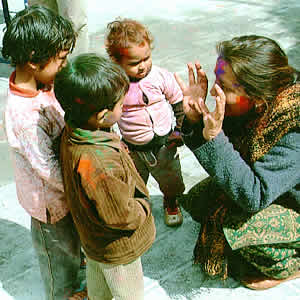
Balwaadi
Balwadis are pre-schools for children between two and a half years and six years of age. Besides providing child-care support for working mothers, Balwadis were platforms to motivate the girl-child into continuing her schooling; and were crucial for disseminating information and raising awareness regarding nutrition, food and health amongst mothers and children.
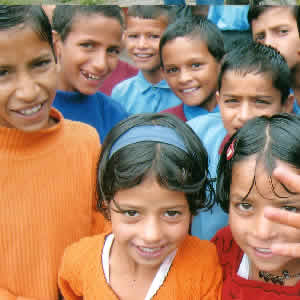
Hamari Pathshala
These were primary schools run by SIDH and supported by the entire village community located in the Aglaar River Valley. When SIDH began its first school in Bhediyan in 1989, less than one in ten children went to school as there were hardly any government schools in these small, far flung villages. Today families consider schooling an integral part of growing up and enrolment figures, including that of the girl-child, are on the rise in most villages. These schools are spaces for experiments and dialogue where children learn by understanding about their community and natural environment.
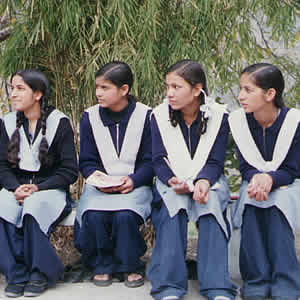
Bodhshala
Bodhshala was our model secondary school that facilitated the teaching of subjects/disciplines through place-based learning and hand-based production activities. Further, by emphasizing the linkages between farming, food and health, Bodhshala enabled a contextual understanding of the village within the larger economic order. (See “Bodhshala : Learning from the Community” by Rajan Venkatesh” a joint publication of SIDH and Other India Press)
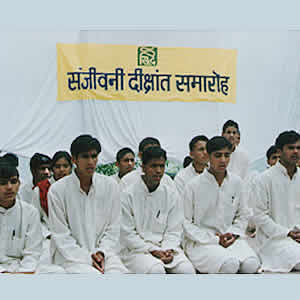
Sanjeevni
Sanjeevani was an intensive, 10-month long, residential, gap-year program geared towards providing a balanced exposure of prospective educational and livelihood opportunities for rural youth (above the age of 17). In the process, Sanjeevani was instrumental in initiating a process of self-inquiry that challenged fundamental mindsets regarding prosperity, progress and development.
The ideas that formed the impetus for the Sanjeevani program were a learning outcome of several research studies conducted and published by SIDH, like “A Matter of Quality”, “The Child and Family” and “Text and Context”, which prompted SIDH to critically examine the impact of modern education on rural communities. To date Sanjeevani has been one of SIDH’s most successful programs because of its lasting impact on village communities.
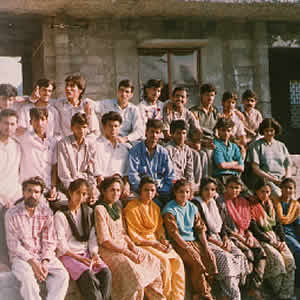
SANMATI
Sanmati was the name given to one week long courses, modeled on the overall objectives of the Sanjeevani program. Sanmati being more strictly time-bound was consequently accessible by a larger population and allowed for a greater outreach to rural youth.
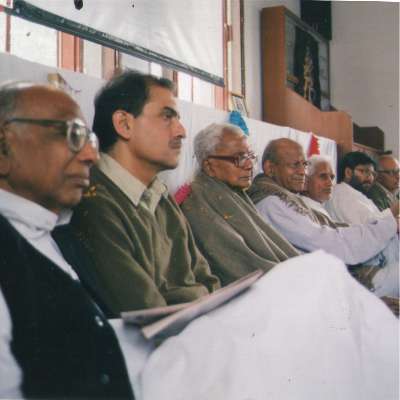
SANSHODHAN
Sanshodhan is the research and publications wing of SIDH. It was started in 1998 to consolidate and uncover the fundamental assumptions of the modern education system and to search for sustainable alternatives within traditional systems of knowledge.
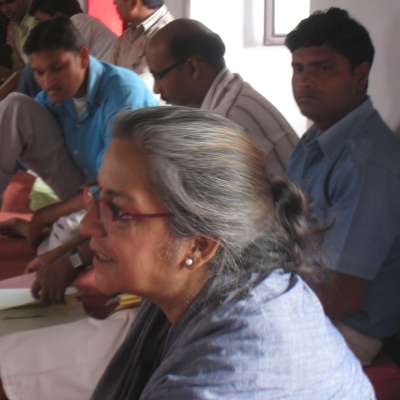
SANMVAAD
Samvaad was our outreach initiative to interface with other citizens, academicians, social activists, policy and opinion makers regarding the learnings and outcomes of SIDH’s programs. To this end, SIDH organized multiple workshops/seminars and the ensuing dialogues were mutually enriching and also helped us improve our existing programs.
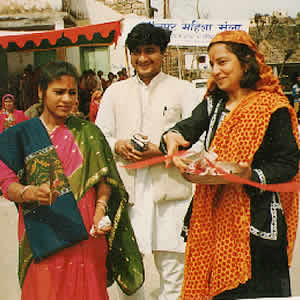
Women's Programs
Women’s Programs was SIDH’s first community initiative. It began by organizing 10 ‘Mahila Dals’ in 1989 and soon grew to accommodate 40 womens’ groups within its mandate. These self-help groups were community-funded and were supporting training classes for adult literacy as well as for the development of craft-skills such as sewing and tailoring.
Over time, the ‘Mahila Mela’, organized annually on the 8th of March became emblematic of the increased agency and status of women within the household and the village community. The Mela was entirely organized and managed by the women. The Kempty Panchayat supported the womens’ group and women participants from far flung villages came to attend the Mela. SIDH is proud that what began as an event has taken a life of its own and is now a tradition, owned by the community.
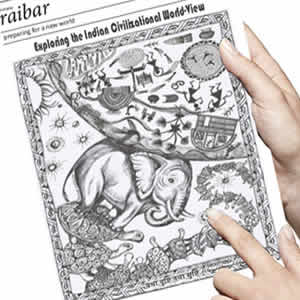
RAIBAAR
A quarterly magazine that was initially started for the rural community as a bulletin and a means to disseminate information about relevant government welfare schemes. It later transformed into a full-fledged journal discussing matters of politics, education and culture. Raibar started life as a Hindi language magazine in 1991 and accumulated a dedicated readership in its uninterrupted run until the late 2000s. After a hiatus of a few odd years it was revived again in 2014. Raibar is currently edited by Rajan Venkatesh and is published on a quarterly basis in both Hindi and English.
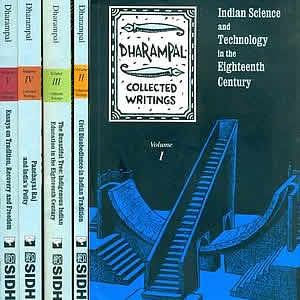
Writings of Shri Dharampal
Dharampal has been a major influence on molding SIDH’s understanding of the impact of modern education on indigenous and rural societies. Dharampal’s work has been critical in illuminating the nature and extent of indigenous social systems prior to the arrival of the British in India. The SIDH has published numerous works of Dharampal, in addition to a 5-volume set of Dharampal’s Collected Writings in collaboration with Other India Press (Mapusa, Goa).
Current Work and Future Vision
SIDH continues with its efforts of subjecting modern paradigms and mindsets to critical scrutiny. The future vision is to mold SIDH into a space that can creatively explore the fault lines of the modern human condition; focusing our inquiry especially on those aspects of modernity that have led to a polarization of public discourse into a binary field of opinions, thus rendering it counter-productive.
At SIDH, we believe that effecting a change in the external has to begin with an earnest exploration of the realm within an individual. And we intend to draw on the resources at hand to enable SIDH into becoming a space that can act as a bridge between the individual and society – while ensuring that all its activities adhere to its core principles of promoting localism, sensitivity and self-reliance.
When SIDH began operating schools in the Jaunpur block of Tehri Garhwal in 1989, there were very few schools in the area. Typically, there was only one primary school for a "gram sabha," which included 6–8 villages spread across a large geographical area. Middle and high schools were even scarcer, and Balwadis (preschools) and Balshalas (informal schools) were almost nonexistent. At that time, this area was part of Uttar Pradesh. When Uttarakhand became a separate state in 2000, the new government prioritized the opening of schools in remote villages. Soon, government schools and Balwadis began appearing in the same villages where SIDH had its educational programs.
In 2008, we reassessed our approach. We observed that many villages where we operated were now served by government schools in addition to SIDH schools. We decided it was best to withdraw our schools, Balwadis, and Balshalas from those villages where the government had initiated its own educational programs. From a peak of nearly 35 schools in 2007–2008, we now operate only one school in Garhkhet village. Our role has shifted from directly running schools to mentoring and preparing teachers for other schools, utilizing the knowledge and experience we’ve gained over the past two decades. We also focus on content creation, publication, and research to support our educational mission. Furthermore, we have chosen not to accept institutional grants tied to specific projects. Instead, we accept contributions from individuals and companies who understand and appreciate our work, and we have stopped applying for project-based funding.
Major Activities (since April 2018)
- Publications: We consider content creation an essential aspect of education. As resources allow, we publish books and journals to share our learning from research, observation, and experience. These publications challenge mainstream narratives about India's past and question the illusions of modernity.
- Retreats: SIDH regularly organizes contemplation retreats in various cities across India, focusing on concepts of "Bhartiyta" (Indianness) and the illusions of modernity. We draw inspiration from the works of Dharampal ji, Prof. A.K. Saran and Shri Ravindra Sharma Guruji. In October 2024, we are hosting a musical retreat on Indian classical music, featuring an eminent presenter. Details can be found in our retreat section.
- Research: Most researches in India are focused on problems existing in our societies. Under the Research division SIDH is focusing on the strengths of our societies and to explore its traditional local knowledge systems in different areas like education, health, agriculture, weather, food etc.
- School: We run a primary school in Garhkhet village in the Jaunpur block of Tehri Garhwal district. The school serves children from six neighboring villages and is managed by an active parents' committee. Currently, the school has about 125 children aged 3 to 12 and employs six teachers.
More Recent Work
Workshops, seminars and online interactions on education and modernity. Our participants are parents and young people who are looking for meaning in life.
A weekly blog on education and modernity.

